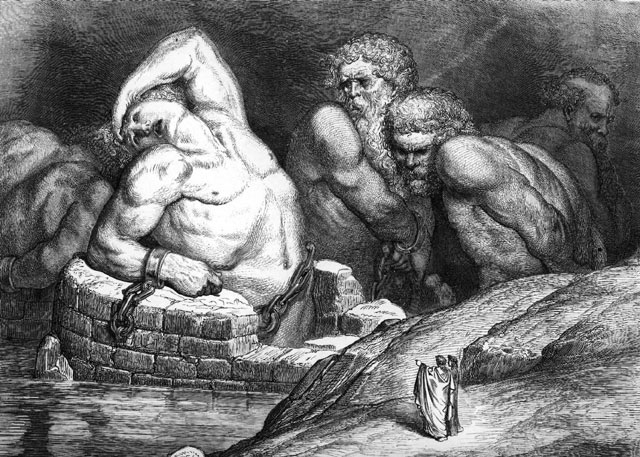As summer becomes a distant memory,Watch Up To And Including Her Limits Online evenings sitting in the garden are replaced with curling up in front of the TV with the heating on … or off. Personal preference varies and but there is often said to be a big gender divide when it comes to feeling the cold. But why would men and women have such different temperature comfort ranges?
The biggest factor in all of this is the skin. The skin is the largest organ in the body and performs many functions. It is a protective barrier against pathogens and ultraviolet radiation from the sun, a restrictive barrier to retain water, it helps synthesize vitamin D from sunlight to strengthen our bones, and it regulates internal body temperature. It is also the primary detector of external temperature.
The skin is made up of three distinct layers: the outermost epidermis, the dermis in the middle and the hypodermis. The hypodermis is the deepest layer (think hypodermic needle for injections) and is also known as the subcutaneous fat layer. It’s insulating and designed to keep us warm. If you go through all these layers you usually reach muscle.
 Original image has been replaced. Credit: Mashable
Original image has been replaced. Credit: Mashable While skin cells are important there are also free nerve endings that detect temperatures and relay this information to the brain. These cells sit right next to where the outermost layer of the skin meets the next layer.
There are many differences in skin – colour is perhaps being the most visible. Less visible is skin thickness. The dermis and epidermis is thickest on the buttocks and thinnest on places such as the thighs and middle of the back. However, the thickness of the deepest subcutaneous fat layer also differs. It is thickest on the buttocks, and thinnest on the arms and thighs. Skin thickness also varies with gender. Women’s subcutaneous fat layer is almost twice as thick as that in men; men carry most of their fat in their abdomen around their organs, women subcutaneously beneath their skin.
But fat is said to be an insulator, so why is there such difference in comfortable temperature? Well the body’s natural reaction to cold temperatures is to shiver --this is where your muscles contract involuntarily or shake to generate heat, and it’s controlled by nerves. It is well documented that men have a higher amount of muscle with which to generate heat in cold temperatures, but also ability to generate heat while resting. Men also have a higher basal metabolic rate – energy expended at rest. These two factors give them a higher resting temperature.
If you consider the basic distribution of subcutaneous fat, the female body should maintain warmth better than the male, but this doesn’t seem to be the case. When you take into consideration skin thickness, subcutaneous fat thickness and muscle mass, it becomes clear that although female muscles shiver the same as those in the male, their thicker insulating layer potentially means that the heat they generated takes longer to get through to the outer layers of the skin where the temperature-sensing free nerve endings are located.
Via GiphyHormones also play a large part in determining comfortable temperature and they cause a more dynamic change in thermoregulation in females than males due to the menstrual cycle. There are also clear differences between amounts of body fat in females depending on ethnic origin. Geographical location can have a huge impact on the need for thick layers of subcutaneous fat to maintain temperature. Some individuals of the Inuit population in Greenland, for example, have 34 percent body fat to maintain temperature in temperatures that range from -8 to 7°C during the year.
So all of these factors may account for why some women and men say they feel the cold differently. Of course many of these differences can also differ between individuals.
Spare a thought for newborns who cannot shiver to keep warm. Their nervous system isn’t developed enough at birth to regulate temperature. However, to compensate for this, they have an abundance of a different type of fat. This brown fat is located around key organs such as the heart and kidneys as well as along the spine to ensure the core remains warm. This fat is thermogenic and creates heat, but, as we age, we lose this fat and it is replaced by white fat (actually yellow in colour) which insulates and acts as an energy store.
So as the nights draw in and the temperature drops, remember there are specific differences in the way our bodies are constructed that mean we feel and respond to changing temperatures differently.
Adam Taylor is the director of the Clinical Anatomy Learning Centre and a senior lecturer at Lancaster University.
 NYT Connections Sports Edition hints and answers for April 26: Tips to solve Connections #215
NYT Connections Sports Edition hints and answers for April 26: Tips to solve Connections #215
 Project Angel Raid
Project Angel Raid
 Taxonomy by Sadie Stein
Taxonomy by Sadie Stein
 The Morning News Roundup for May 23, 2014
The Morning News Roundup for May 23, 2014
 Sacred Rites by Sadie Stein
Sacred Rites by Sadie Stein
 The Morning News Roundup for May 30, 2014
The Morning News Roundup for May 30, 2014
 I’d Like to Make You Smile
I’d Like to Make You Smile
 Deep Foot and Deeper Foot
Deep Foot and Deeper Foot
 The Amazon Book Sale is coming April 23 through 28
The Amazon Book Sale is coming April 23 through 28
 Project Angel Raid
Project Angel Raid
 Signs and Wonders: In the Studio with Hayal Pozanti by Joseph Akel
Signs and Wonders: In the Studio with Hayal Pozanti by Joseph Akel
 World Cup 2014 Begins Now
World Cup 2014 Begins Now
 Mary Shows Up
Mary Shows Up
 Recap of Canto 30 of Dante’s “Inferno”
Recap of Canto 30 of Dante’s “Inferno”
 I’d Like to Make You Smile
I’d Like to Make You Smile
 Medical Literature by Sadie Stein
Medical Literature by Sadie Stein
 NYT Strands hints, answers for April 14
NYT Strands hints, answers for April 14
 Originals and Remnants by Dan Piepenbring
Originals and Remnants by Dan Piepenbring
Apple's new iPad Pro will have larger OLED display, report saysWin Two Free FrontApple just became more of a California cult than everThe Morning News Roundup for September 16, 2014Steve from 'Blue's Clues' returned and fans are coming to terms with growing upThe Morning News Roundup for September 8, 2014Best smartwatch deal: Samsung Galaxy Watch 5 on sale for $179How to Block and Unblock someone on InstagramBest cheap flight deal: BOGO free tickets for you and a friend with SouthwestIs Spam Art?The Well on Spring StreetThis *very good* dog stole a cricket ball in the middle of a big matchWriting Advice from D. H. Lawrence at TwentyApple sends invites for iPhone 15 launch on Sept. 12Tinder brings back Work Mode for daters returning to the officeMacArthur Fellows, Past and PresentIs Spam Art?YouTube killed Discord's most popular music bot, RhythmTikTok's Kat Callaghan narrates a Calm Sleep StoryThe Illustrations of Arthur Rackham NYT mini crossword answers for May 10, 2025 Bill Gates is giving away nearly all his wealth by 2045 Handheld Xbox console images leak just weeks before Switch 2 launch New Legion 9i gaming laptop: Lenovo unveils Legion 9i with glasses Lego Pixar Lamp set: How to preorder NYT Strands hints, answers for May 8 MotoGP 2025 livestream: Watch France Grand Prix for free Soviets were heading to Venus in 1972. The spacecraft is about to return. Toyota says it was hit with $1.2 billion tariff bill No, Microsoft's Surface laptops didn't get pricier The Original Peloton bike is $300 off at Amazon NYT Connections Sports Edition hints and answers for May 9: Tips to solve Connections #228 NYT Connections hints and answers for May 8: Tips to solve 'Connections' #697. Soundcloud changed its AI policy so it can train on users' audio What happens when you're banned from dating apps Best robot vacuum deal: $350 off Eufy X10 Pro Omni robot vacuum Today's Hurdle hints and answers for May 10, 2025 Everything to know about the new Whoop 5.0 and Whoop MG fitness trackers NYT Strands hints, answers for May 11 Did Siri snoop on you? Apply to get up to $100 from Apple.
2.4307s , 10134.1640625 kb
Copyright © 2025 Powered by 【Watch Up To And Including Her Limits Online】,Wisdom Convergence Information Network